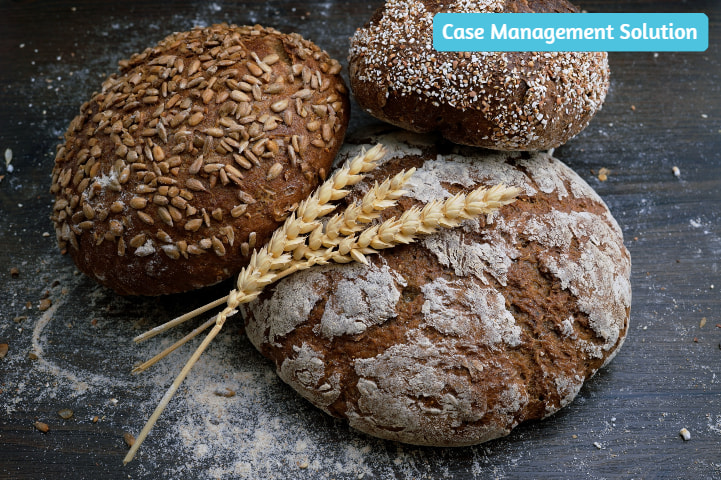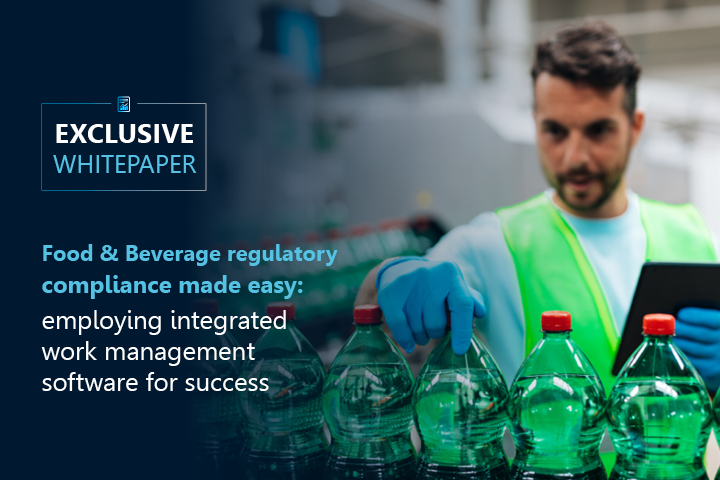articles
A guide to best practice quality assurance in the food and beverage industry
12 May 2023
Quality assurance (QA) plays an important role in the food and beverage (F&B) industry to ensure manufacturers deliver products that are consistent and safe for consumers to ingest. This is made complex as there are a number of points along the supply chain that need to be managed, and overlooking quality at any stage can result in harm to consumers’ health, fines, and damage to a brand’s reputation. Having the right digital tools can support a best-practice QA program to mitigate these risks.
QA encompasses a broad set of activities that aim to proactively prevent issues and defects, ensuring all aspects of quality – such as portion size, product characteristics, customer expectations and value for money – meet various internal and external standards and regulations. It requires ongoing effort and needs to be put into practice every day to achieve the desired outcomes consistently over time.
In the F&B industry, QA involves establishing a set of activities that improve and ensure quality in processes during all stages of production and packaging so that defects do not arise. It also contributes to the overall business need for continual improvements, maintenance, record keeping, problem finding and solving, and delivering a safe, high-quality product.

Best practice QA
 Determine quality expectations
Determine quality expectations
An effective QA program needs to be built on a set of strong expectations. These are needed to guide and determine quality and safety of products, and encompass quality metrics, and identified risks and mitigation strategies.
 Define quality metrics
Define quality metrics
Quality metrics can be defined from a number of sources such as customer requirements, quality certifications, and standards and regulations. There are a number of quality metrics that can be tracked including temperature, humidity and pH levels.
 Identify risks
Identify risks
A strong QA program requires a detailed risk assessment that analyses potential risks across all areas – which could include suppliers, raw materials, crisis management, product recalls, audit management, traceability, allergens, complaints, sanitation, and microbial control – so they can be ranked and an actionable mitigation plan implemented.
 Establish mitigations
Establish mitigations
Once risks have been identified, a Quality Process Control System can be established through which mitigation strategies can be implemented. Hazard Analysis and Critical Control Points (HACCP) is one framework that can be used to achieve this.
HACCP involves:
Mitigation strategies should include developing Quality Standard Operating Procedures, as well as providing training for QA teams and thoroughly documenting all policies and procedures for compliance purposes.
 Collect data
Collect data
Relevant data must be collected and analysed to ensure QA programs are working. The F&B industry has traditionally done this manually using paper-based systems and spreadsheets. However, there has been a shift towards digital tools that provide data and analytics for real-time insight.

Measure performance
The collected data needs to be analysed and relevant information measured to identify cause and effect relationships to draw conclusions about issues in production and the supply chain. Patterns can be identified not only in quality metrics, but also across broader performance indicators such as customer complaints, downtime and equipment effectiveness.

Achieve continuous improvement with data
Performance data needs to be monitored day-to-day and over the long term to drive decision-making and identify inefficiencies and recurring issues. Data can also be used to inform short and long-term goals, allowing businesses to structure priorities around key quality outcomes that will help them realise the most improvement in performance.
Simplifying QA
Xugo’s work management software (WMS) provides many of the digital tools you need to achieve best-practice QA. It helps you manage many aspects of your QA program, from bringing together compliance-driven data, powering quality frameworks, and increasing visibility of safety, quality, regulatory and enforcement-related programs.
Xugo's configurable work management workflows match to your defined business rules, critical compliance control points, triggers and escalation paths to drive your compliance programs and walk your team through each step.
It also allows you to manage customer complaints, feedback, recall cases, lab and factory investigations, and instigate inspections, audits and corrective actions.
If a non-conformance case has been triggered, Xugo automatically creates a series of corrective action requests (CAR) tasks that need to be completed, removing the manual exchange of forms and checklists. Users can attach notes, photos, videos and documents to cases as proof of analysis or to identify defects and or remedies. If needed, procedures, regulatory checklists and forms can be accessed from Xugo’s knowledgebase.
Furthermore, users can get reminders, and complete and perform site and asset inspections, quality assessments, safety checklists and forms by logging in to Xugo’s app from any smart device.
Collect data and measure performance
Xugo’s WMS provides a single authoritative system/data for all information and communication – a crucial feature to ensure QA programs and audits are conducted in a timely manner and further costs are not incurred.
Businesses can get bigger-picture visibility and access up-to-date progress reports when needed with Xugo’s dashboard. Key metrics are readily available for increased transparency and to demonstrate solid practices are being complied with.
Xugo reports not only provide a real-time view, but can also be customised, generated and scheduled, allowing you to keep key stakeholders informed, track performance, fine-tune processes, and gain insight into your programs.
And importantly for the F&B industry, for every case or audit created and managed in Xugo, there is an extensive traceability trail showing retrospectively who did what and when. Every change, action and interaction are logged securely, showing transparently what has happened at each stage of production. In the event of a quality problem or product failure, this ensures affected products can be isolated and greatly limits the extent of any recall or corrective action.
Xugo makes best-practice QA easier to achieve, providing many of the digital tools needed to underpin your QA program and support the ongoing success of your business.
how we have helped others
Ensuring customer satisfaction at the Arnott's Group
Through implementing Xugo, Arnott's has an optimised consumer data system with greater visibility if there is an issue or a recurring trend thanks to tailored alerts.Streamlining Snack Brands Australia’s day-to-day tasks in Xugo
Upgrading to Xugo has meant flexibility for Snack Brands’ staff and streamlined systems for day-to-day operations.Noumi upgrades Case Management platform for their Support Heroes with Xugo
Full visibility of consumer issues and feedback, with no extra effort to view cases coming in from various channels - speeding up Noumi’s response times.Creating consistency and adaptability for Asahi Beverages
Implementing Xugo has made completing tasks more efficient at Asahi Beverages, with staff being able to log in or generate reports at the touch of a button.











